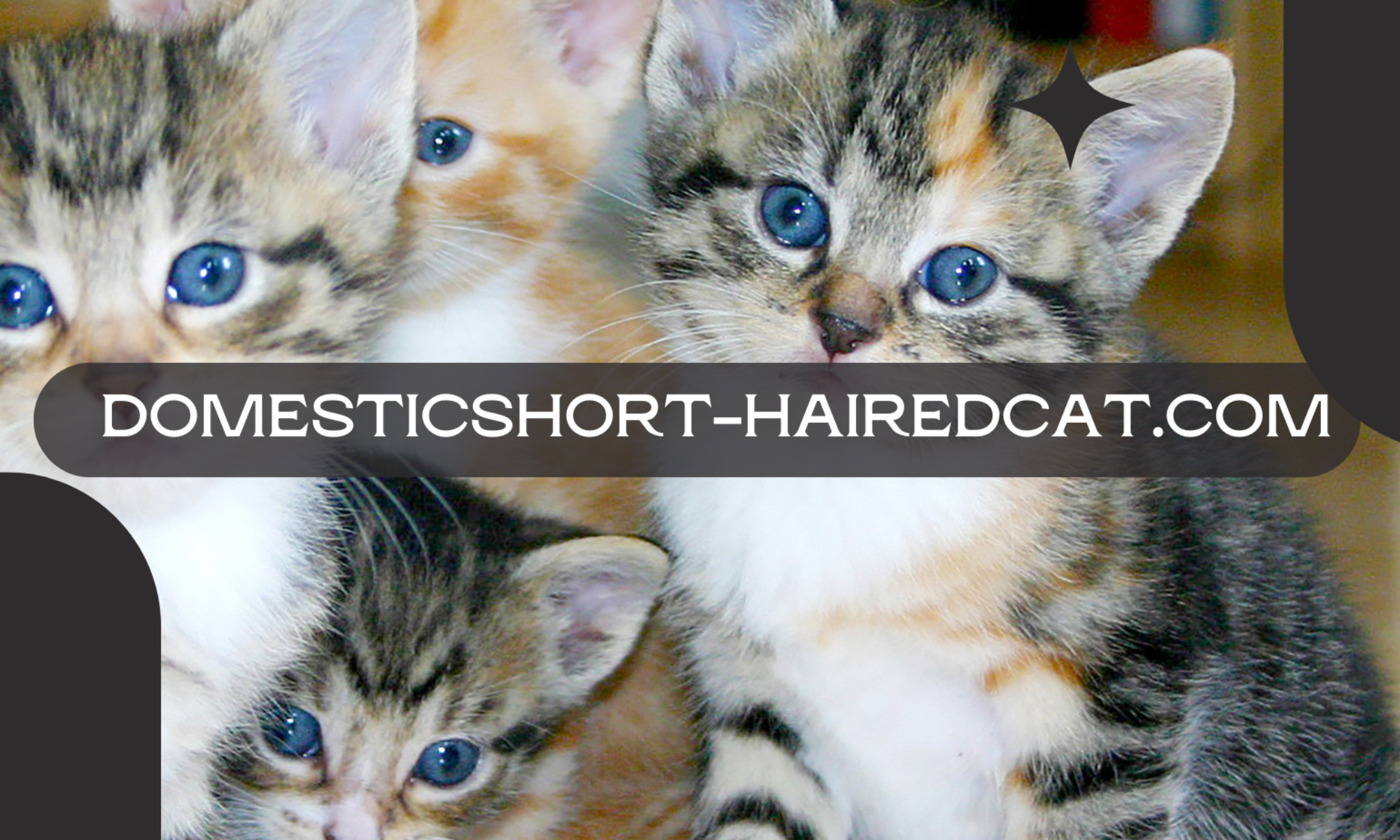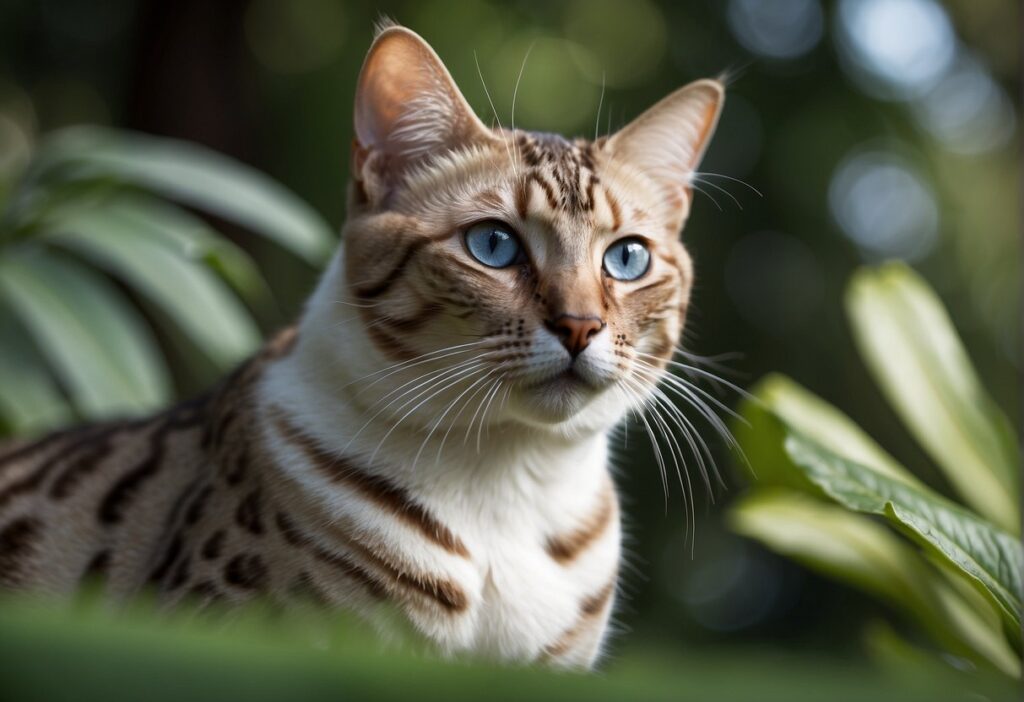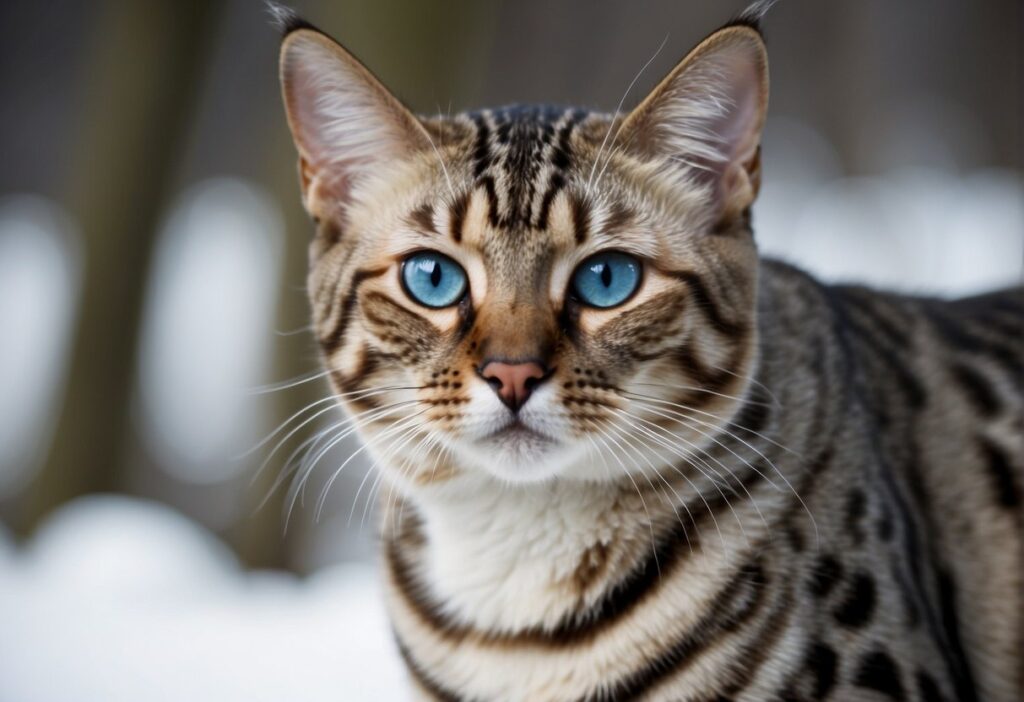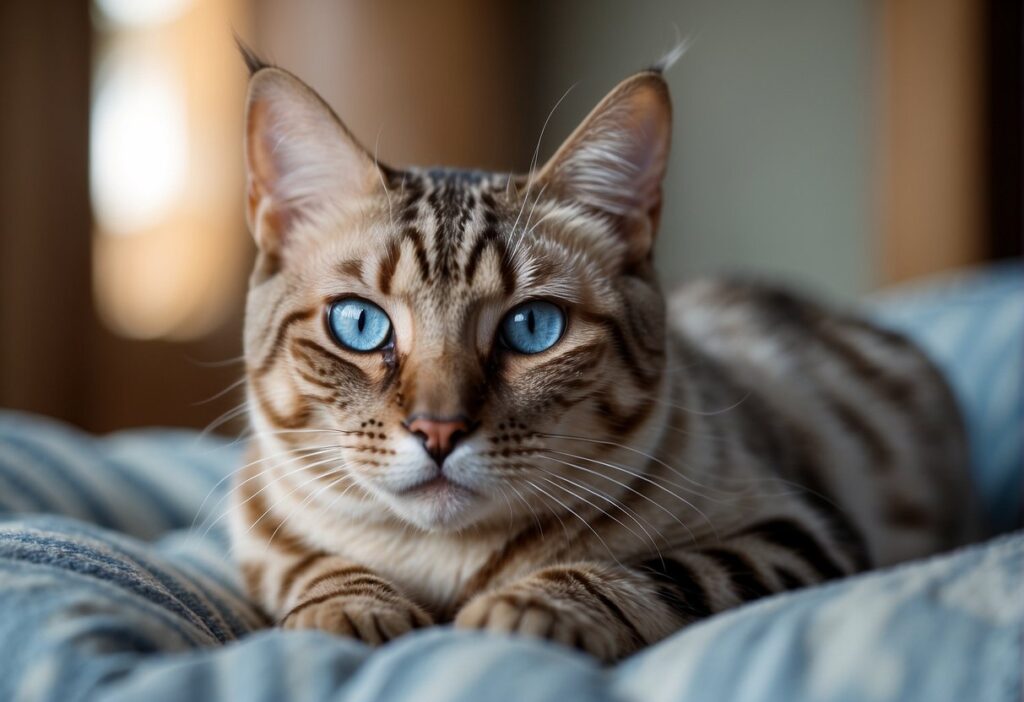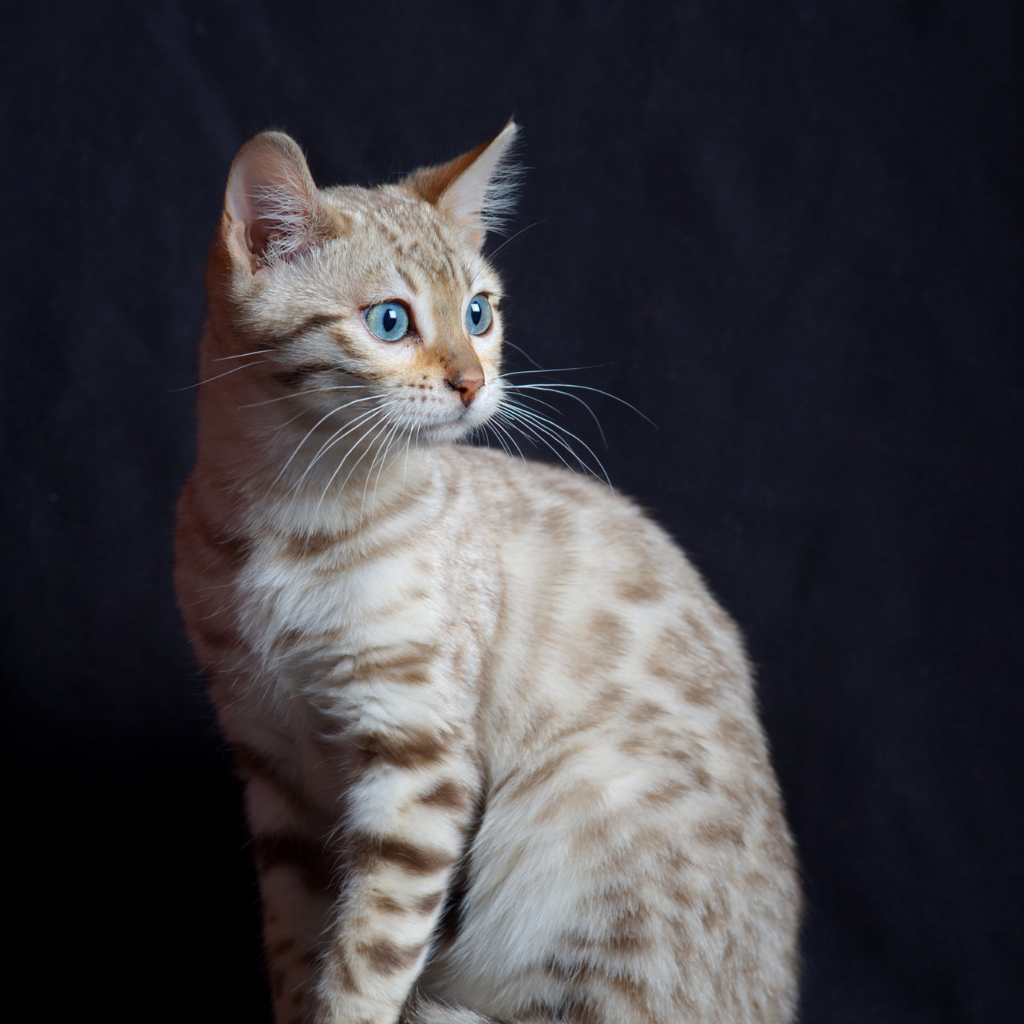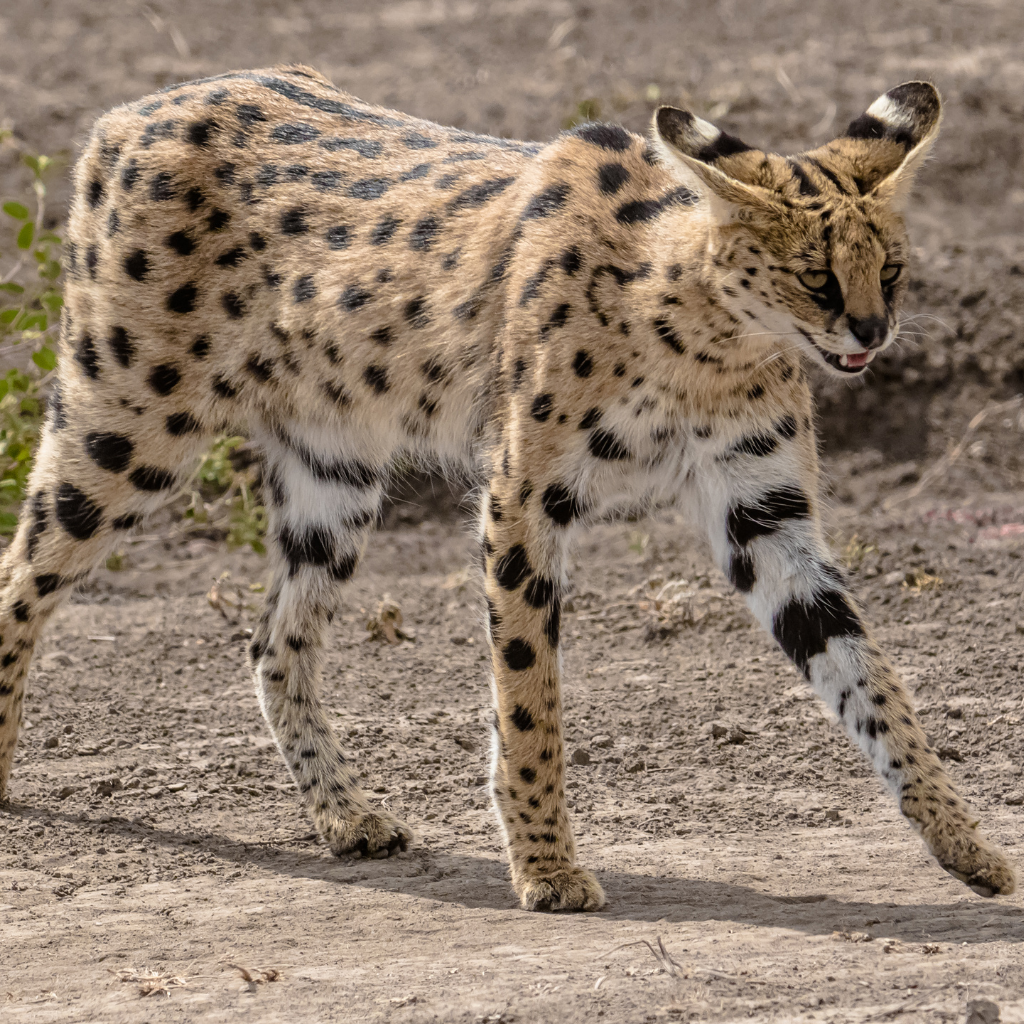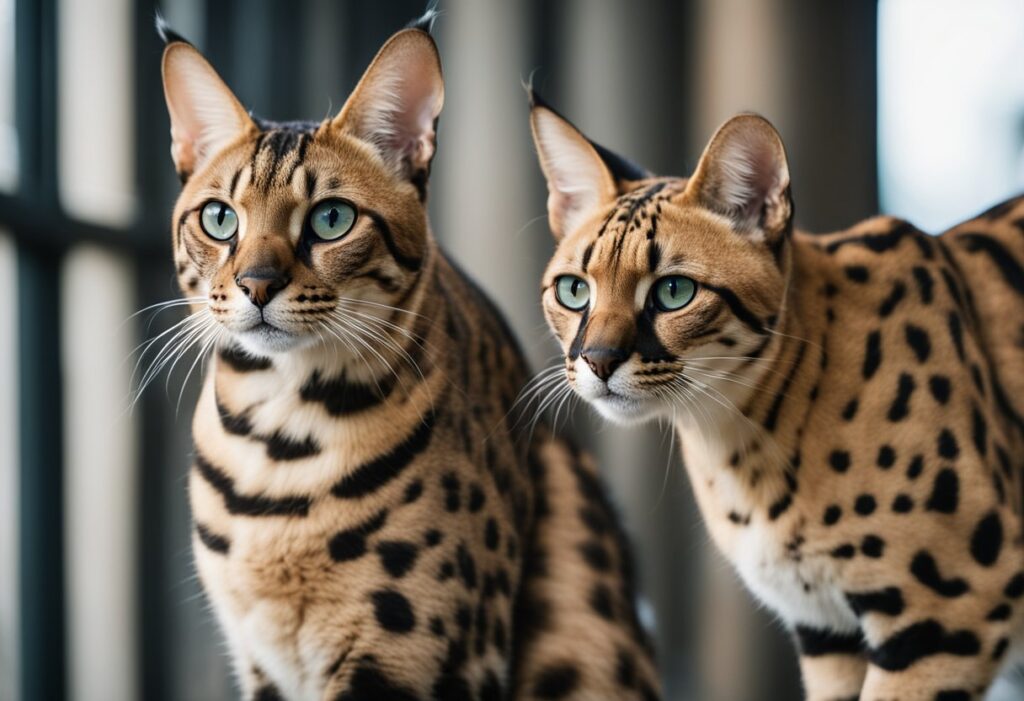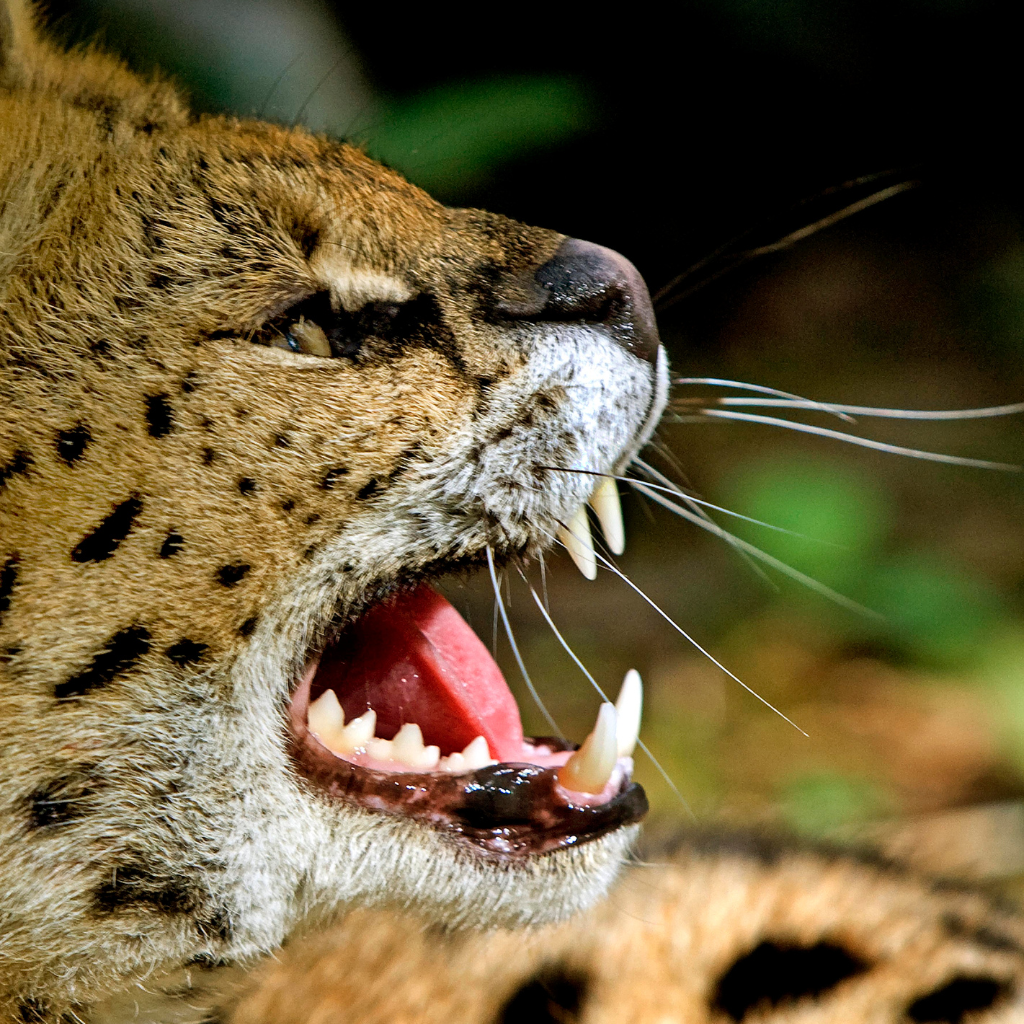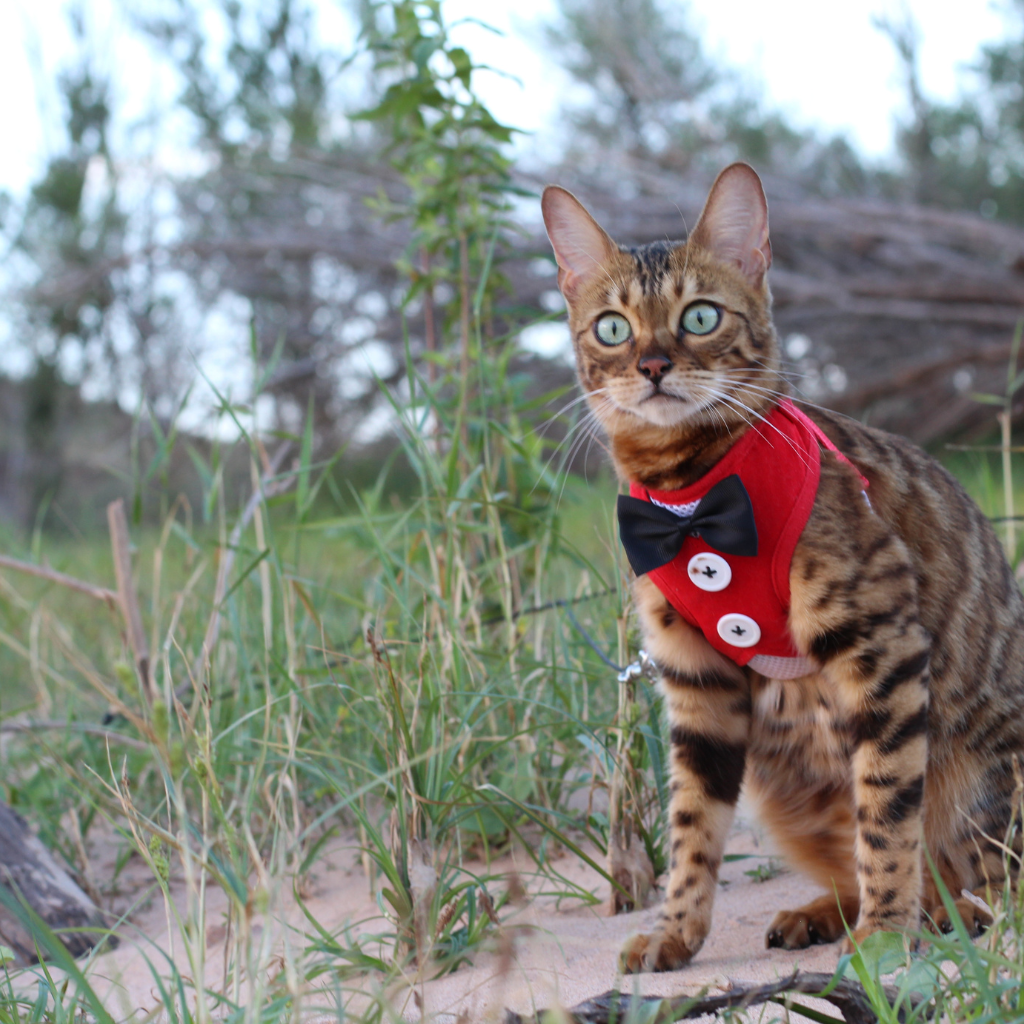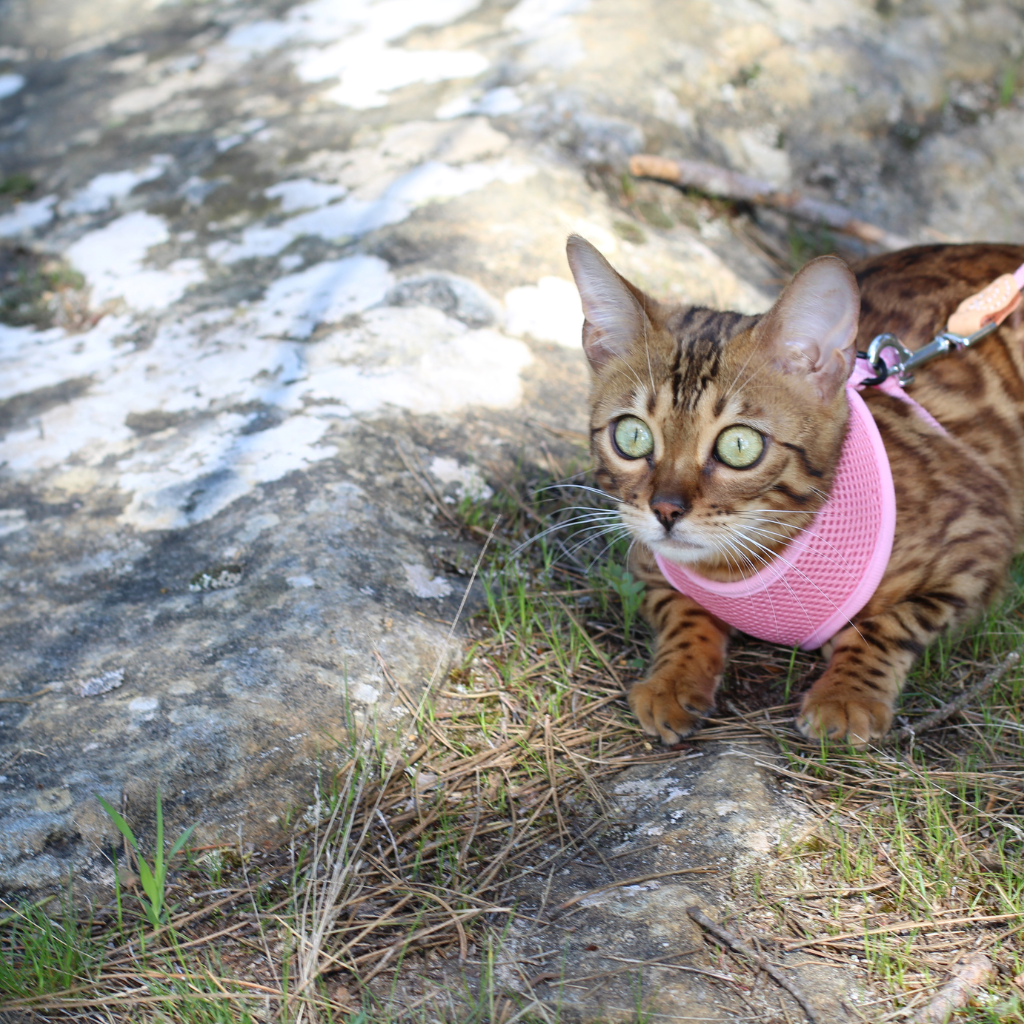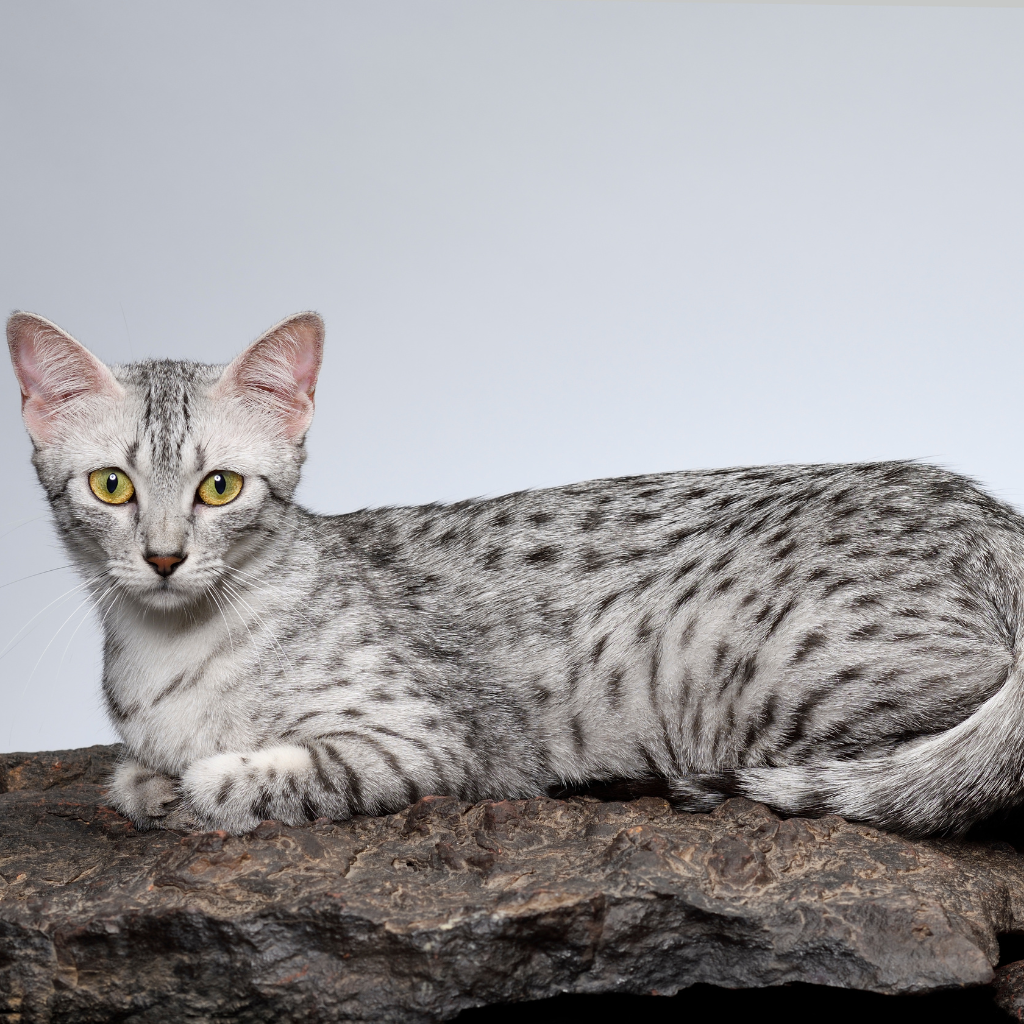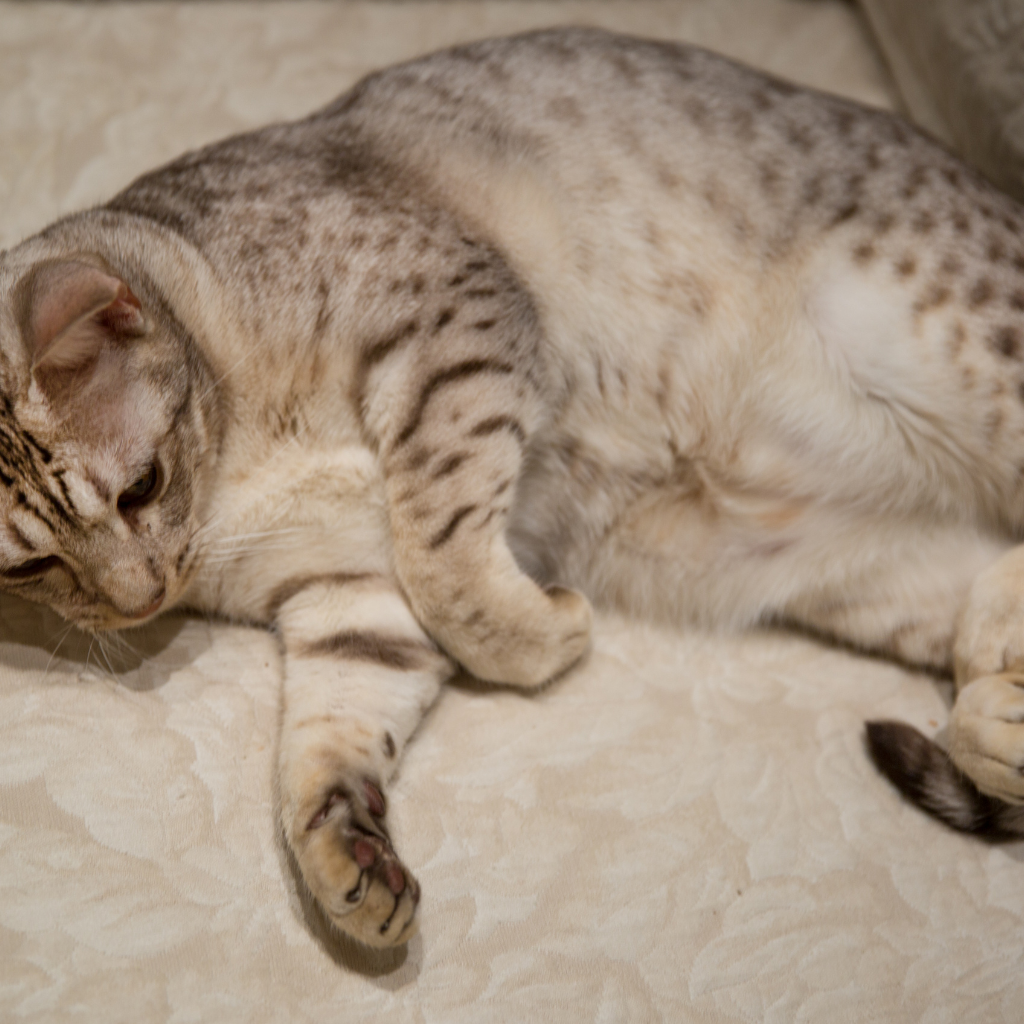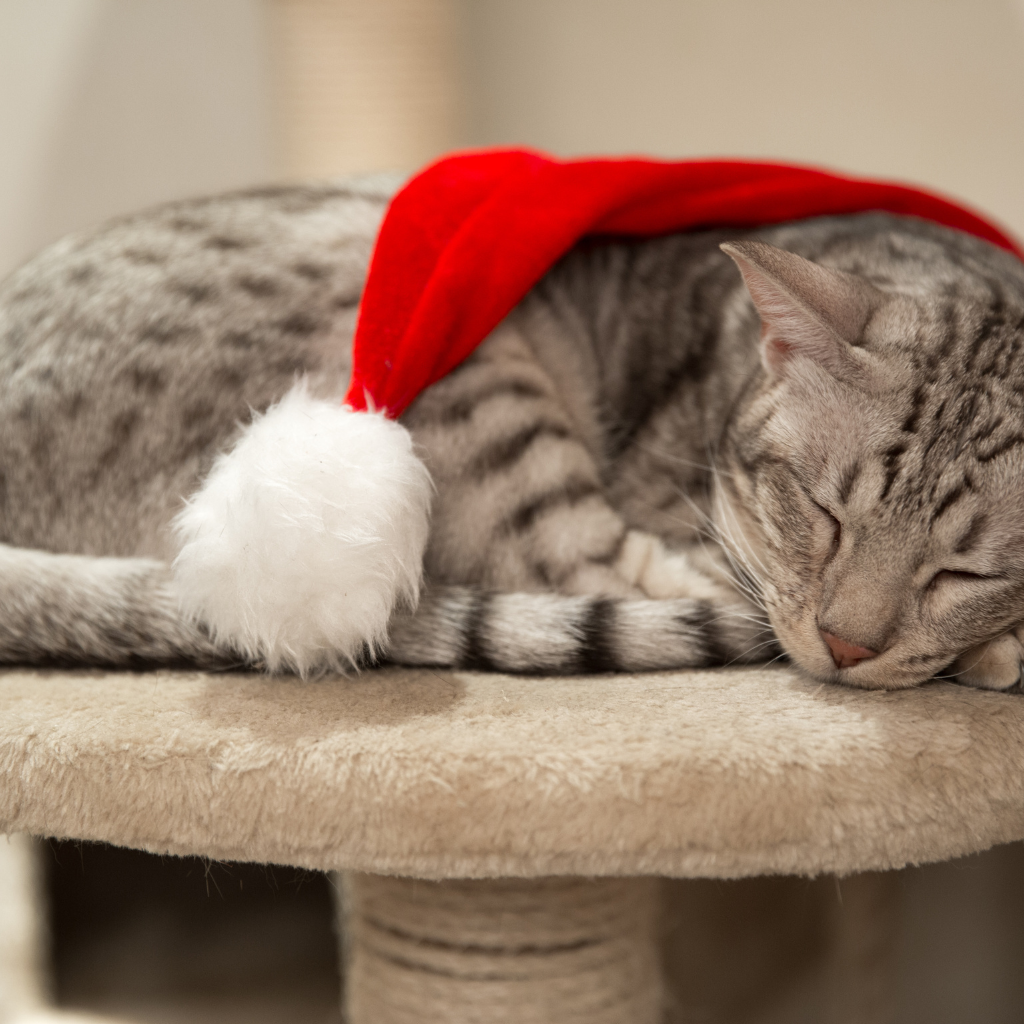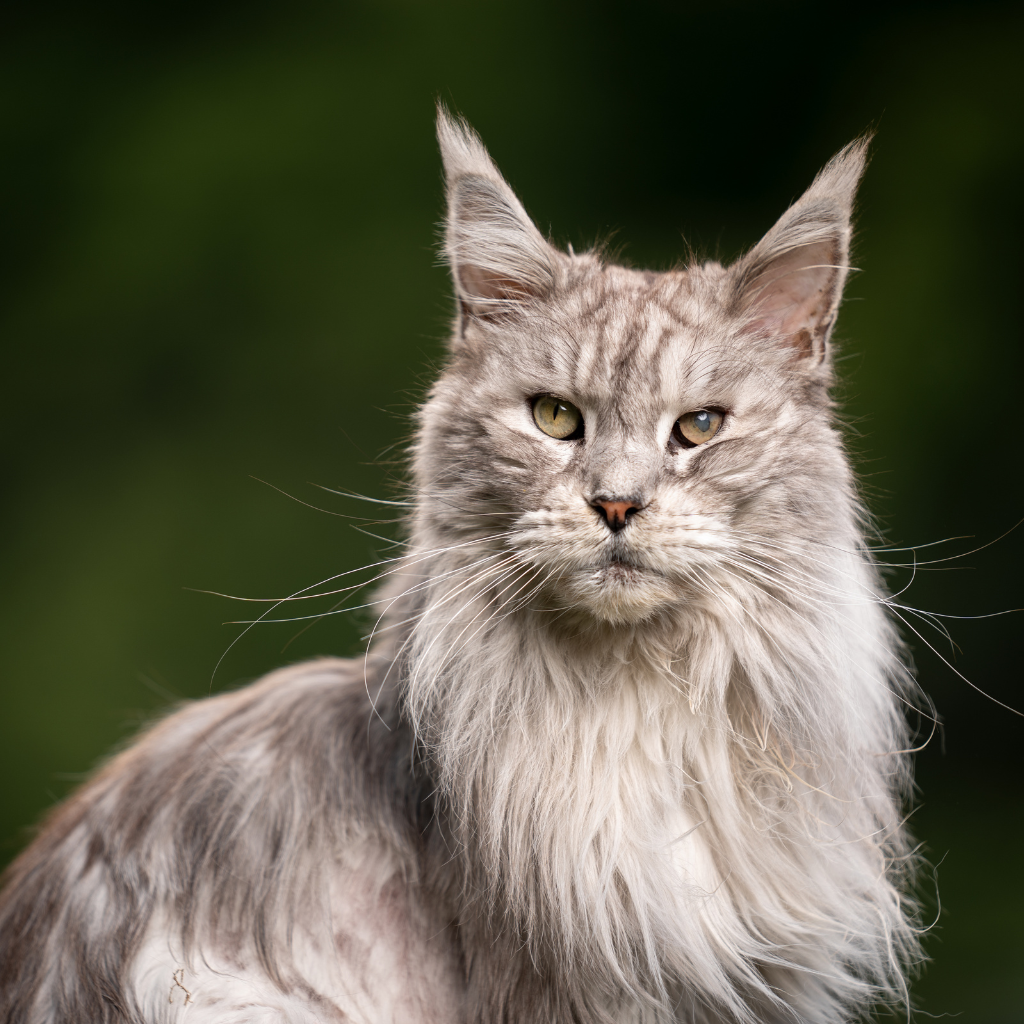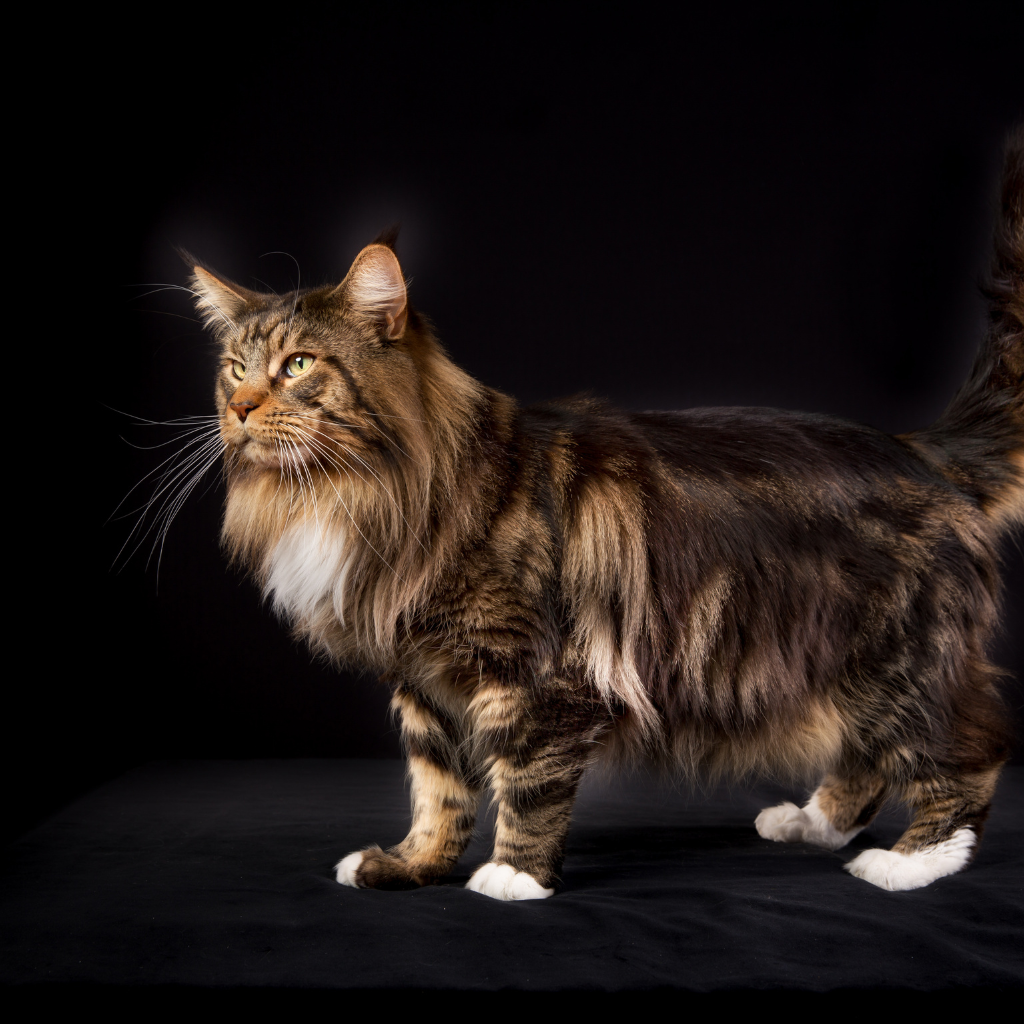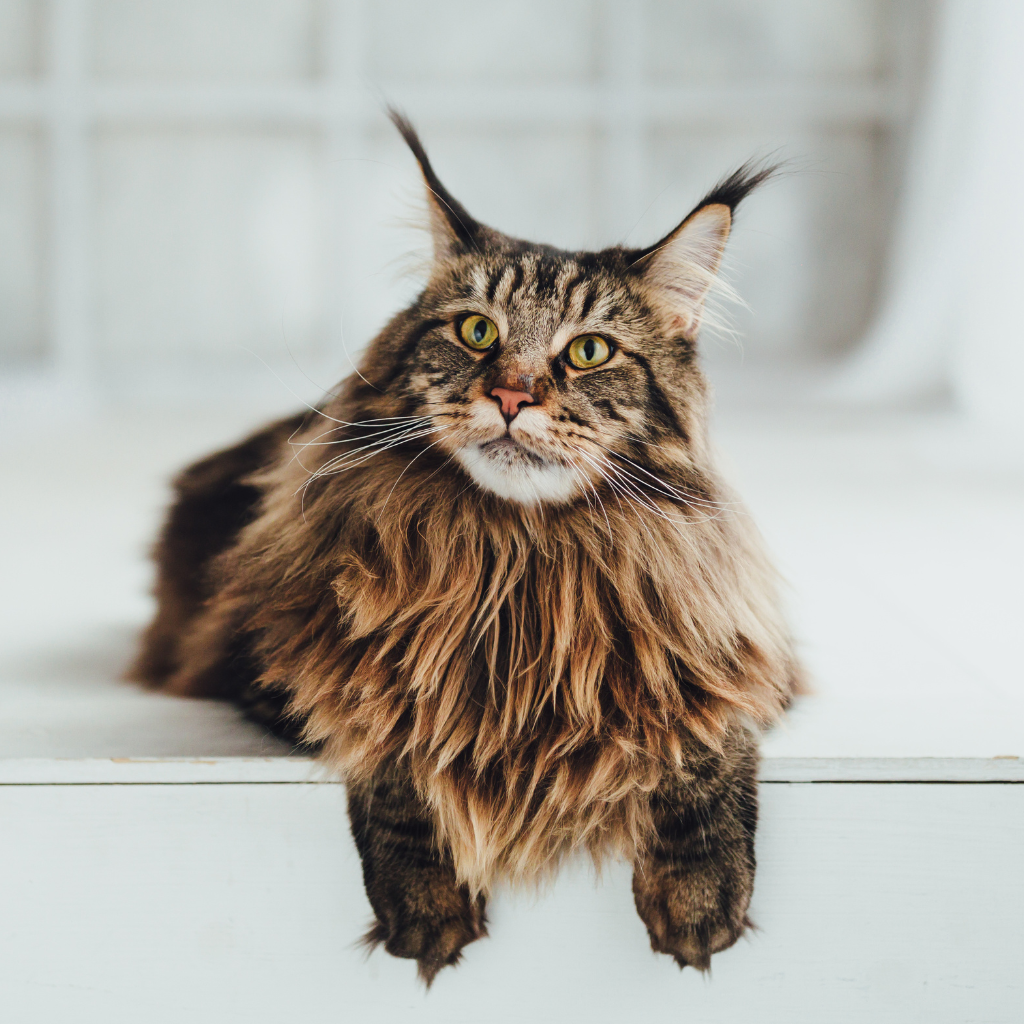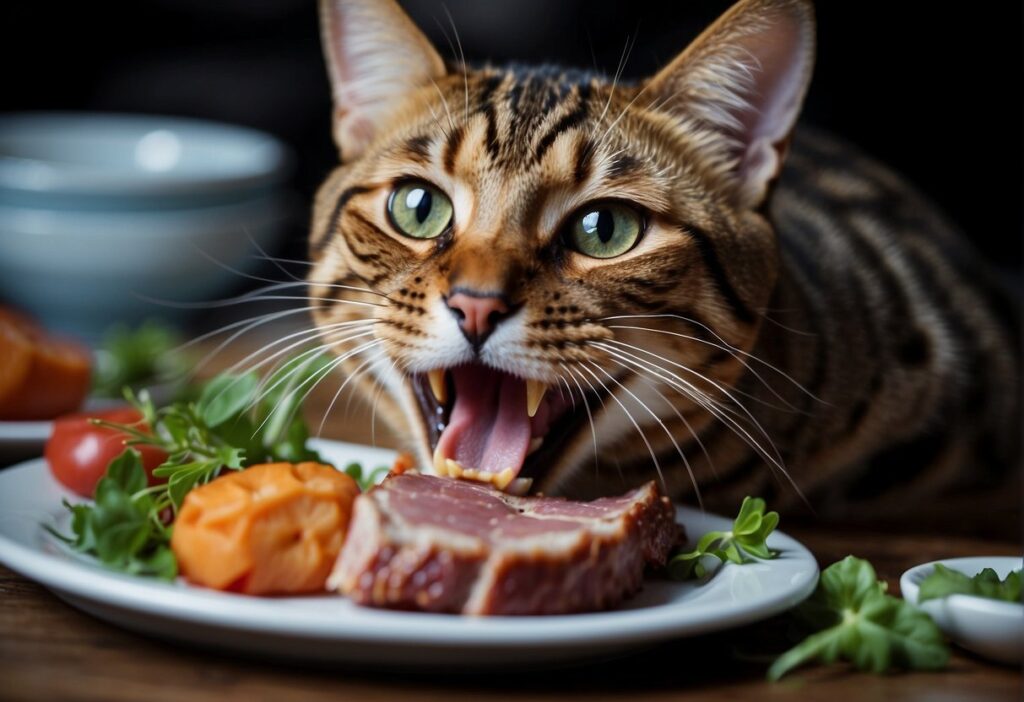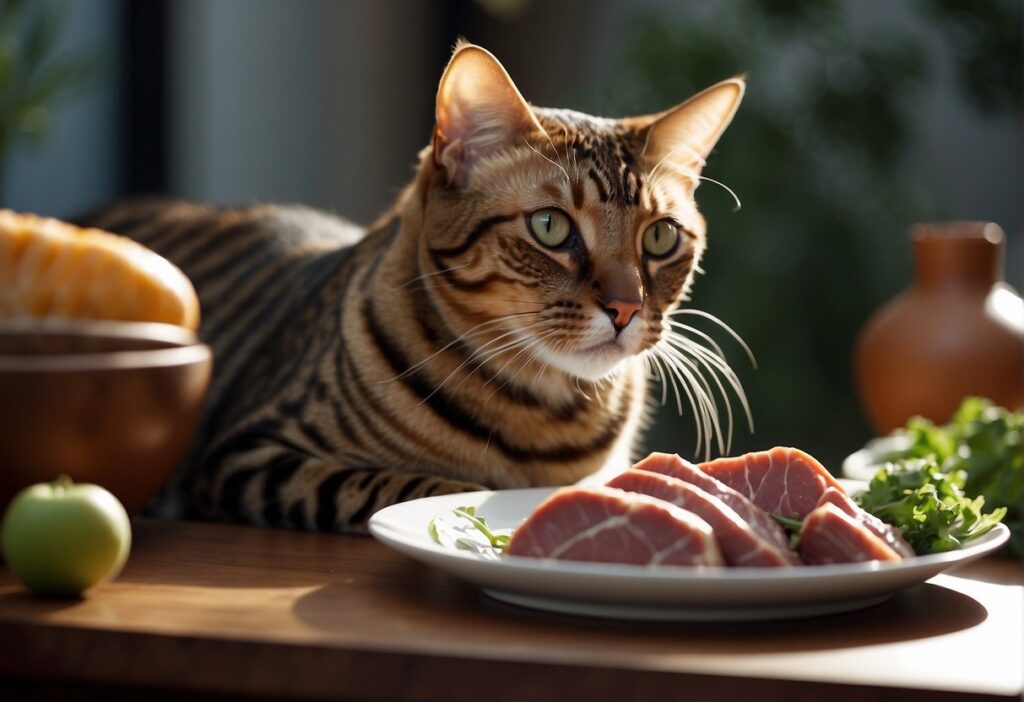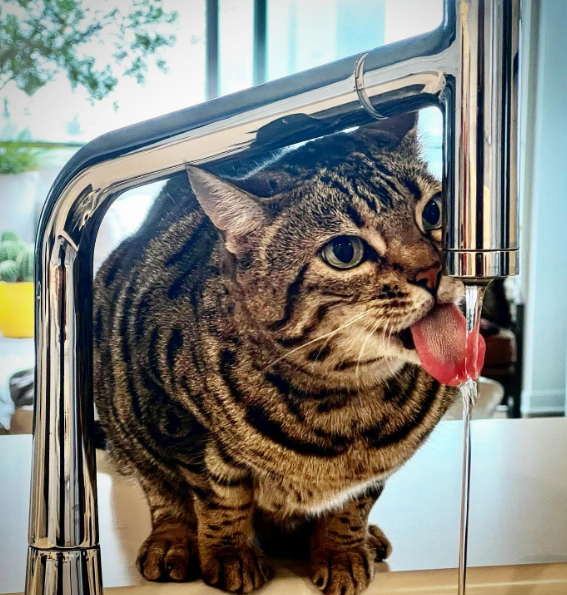
The F rating system is commonly used to describe Bengal cats and is used to indicate how many generations a Bengal cat is from its wild ancestor, the Asian Leopard Cat (ALC).
An F1 Bengal cat is the first generation offspring of an ALC and a domestic cat. This means that an F1 Bengal cat has 50% ALC blood and 50% domestic cat blood.
Due to their high percentage of wild blood, F1 Bengals can exhibit wild traits such as being more active, vocal, and territorial than other domesticated cats.
On the other hand, an F5 Bengal cat is the fifth generation offspring of an ALC and a domestic cat. This means that an F5 Bengal cat has only 6.25% ALC blood and 93.75% domestic cat blood. As a result, F5 Bengals are more similar in temperament to other domesticated cats and are less likely to exhibit wild traits.
It is important to note that each Bengal cat, regardless of its F rating, has its own unique personality and behavior. However, the F rating system can provide insight into a Bengal cat’s potential temperament and behavior based on its percentage of wild blood.
Here is a table summarizing the main differences between F1 and F5 Bengal cats:
| F Rating | ALC Blood Percentage | Domestic Cat Blood Percentage | Potential Temperament |
|---|---|---|---|
| F1 | 50% | 50% | More active, vocal, and territorial |
| F5 | 6.25% | 93.75% | More similar in temperament to other domesticated cats |
Understanding Bengal Cat Generations

Bengal cats are classified based on their generation, which is determined by the number of generations removed from their wild ancestor, the Asian Leopard Cat. Understanding the different generations is crucial in determining the cat’s behavior, personality, and suitability for adoption or breeding purposes.
Defining F1 to F5 Generations
Bengal cats are classified from F1 to F5, depending on the number of generations removed from their wild parent.
An F1 Bengal cat is the first generation offspring of an Asian Leopard Cat and a domestic cat. The F2 Bengal cat is the second generation, F3 is the third generation, and so on.
The higher the number, the more generations removed from the wild parent.
The Role of the Asian Leopard Cat
The Asian Leopard Cat is the wild parent of Bengal cats and is responsible for their unique traits, such as their distinctive coat pattern and muscular build. The Asian Leopard Cat is bred with a domestic cat to produce the first generation of Bengal cats, the F1.
Filial Scale and Bengal Cats
Bengal cats are classified based on the filial scale, which measures the percentage of wild blood in their genetics.
The F1 Bengal cat has 50% wild blood, while the F2 has 25%. The F3 Bengal cat has 12.5%, and the F4 and F5 have minimal wild blood, with less than 10%.
Physical Characteristics
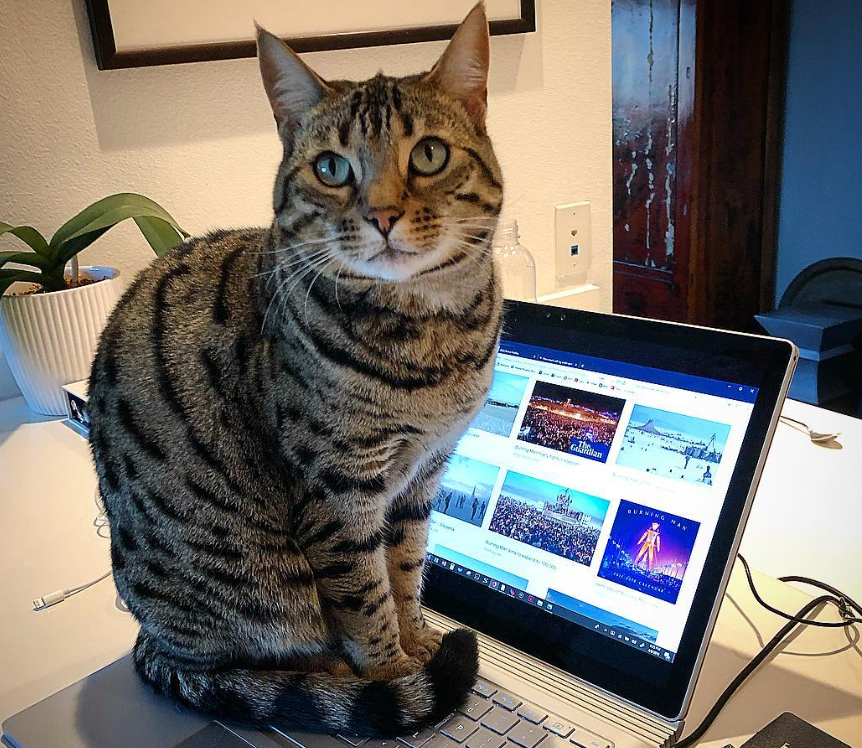
With all that said, there are some key differences in their physical characteristics. Here are some of the most notable ones:
1. Size and Appearance Comparison
F1 Bengal cats are typically larger than F5s. They can weigh up to 20 pounds and stand up to 16 inches tall at the shoulder. Their muscular build and longer legs give them a more wild and exotic appearance.
On the other hand, F5 Bengal cats are usually smaller and more compact, weighing around 10-15 pounds and standing about 12 inches tall at the shoulder. They have a more domesticated look with a rounder face and shorter legs.
2. Coat Color and Patterns
Both F1 and F5 Bengal cats have unique coat patterns that make them stand out from other breeds.
F1 Bengals tend to have a more varied and exotic coat pattern, with a mix of spots, rosettes, and stripes. Their coat can range from a light golden color to a darker orange-brown shade.
On the other hand, F5 Bengals have a more predictable coat pattern that resembles that of a domestic cat. Their coat is usually a lighter golden color with distinct spots or rosettes.
In terms of coat texture, both F1 and F5 Bengals have a soft and plush coat that requires minimal grooming. However, F1 Bengals tend to shed more due to their wild ancestor genes, while F5 Bengals shed less.
F1 Bengal Cat Behavior
s an F1 Bengal cat has one wild parent, it is likely to exhibit traits similar to the Asian Leopard Cat (ALC), such as being more aggressive, territorial, and independent. They are also known for being highly active and curious.
Due to their wild ancestry, they may require more attention and socialization than a domestic Bengal cat. It is important to note that F1 Bengal cats are not considered a domestic breed and may not be suitable for everyone.
F5 Bengal Cat Personality
An F5 Bengal cat is five generations removed from its wild ancestor and is considered a domestic Bengal cat. They are known for their friendly and affectionate personality, making them great family pets.
They are also highly intelligent and curious, and love to explore their surroundings. F5 Bengals are generally more adaptable to different environments and are less likely to exhibit aggressive or territorial behavior.
Energy Level and Activity
Bengal cats, regardless of their generation, are known for their high energy levels and need for physical and mental stimulation. They are highly active and require plenty of playtime and exercise to stay happy and healthy.
Providing them with toys, scratching posts, and interactive games can help keep them entertained and prevent destructive behavior.
Legal Considerations and Ownership Laws

It’s essential to understand the legal considerations and ownership laws surrounding these exotic cats. In this section, I will discuss two main topics: state-specific Bengal cat legislation and TICA’s stance on ownership.
1. State-Specific Bengal Cat Legislation
It is important to note that Bengal cat ownership laws vary by state. For example, Alaska, Georgia, Iowa, Massachusetts, and New York have strict laws regarding the ownership of exotic animals, including Bengal cats.
In these states, it is illegal to own an F1, F2, or F3 Bengal cat, but F4 and beyond are typically allowed. However, it is always best to check with your state’s specific laws and regulations before bringing a Bengal cat home.
2. TICA’s Stance on Ownership
The International Cat Association (TICA) is a well-known organization that sets standards for cat breeds, including Bengal cats. According to TICA, all Bengal cats are considered domestic cats, regardless of their generation.
Therefore, TICA does not have any restrictions on owning or breeding Bengal cats.
Genetic Traits from F1 to F5
Bengal cats inherit specific genetic traits from their wild Asian leopard cat ancestors. These traits can be seen in the early generations (F1-F3) but become less apparent in later generations (F4-F5).
Some of these traits include a muscular build, large paws, and a distinctive spotted coat.
F1 Bengal cats are the most exotic and wild-looking of all the Bengal generations. They have a more pronounced wild cat appearance, with a larger head, longer legs, and a more muscular build.
F2 and F3 Bengal cats still have a wild appearance but are more domesticated than F1s. F4 and F5 Bengal cats are the most domesticated and have a more predictable appearance and temperament similar to that of a domestic cat.
Infertility in Early Generations
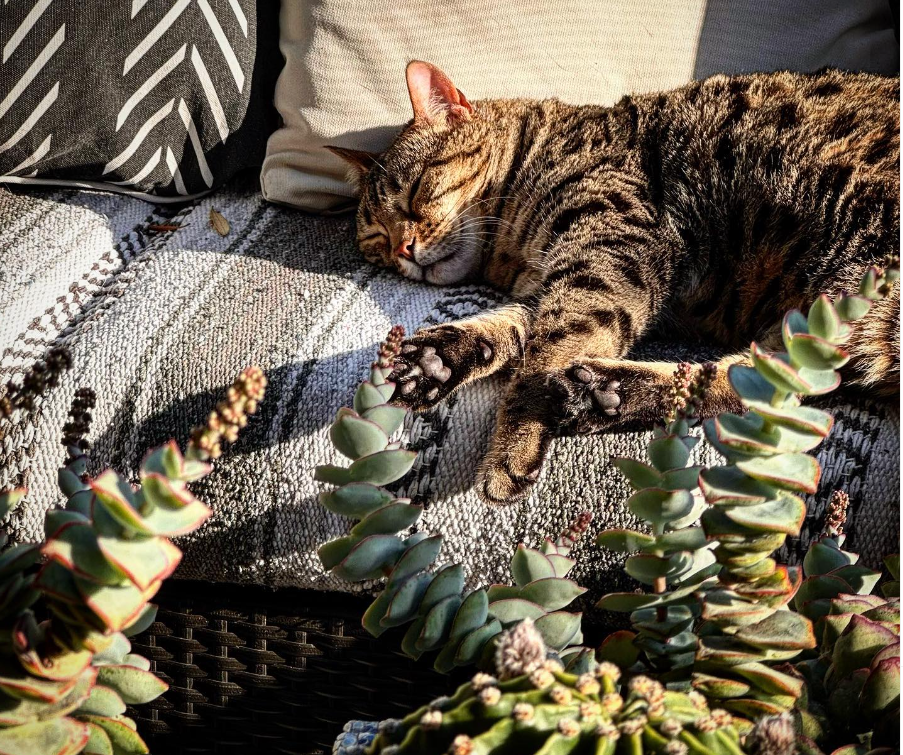
Due to the hybrid nature of Bengal cats, early generations (F1-F3) can sometimes be infertile. This is because of the genetic differences between the Asian leopard cat and domestic cat.
Breeders must be aware of this potential issue and plan their breeding programs accordingly. Successful breeding of early generations requires a great deal of knowledge and expertise.
Adoption and Price Considerations
When it comes to adopting a Bengal cat, there are a few things to consider. In this section, I will discuss the cost of F1 vs F5 Bengal cats and how to find reputable breeders and adoption centers.
Cost of F1 vs F5 Bengal Cats
One important factor to consider when adopting a Bengal cat is the cost.
F1 Bengal cats, which are the first generation offspring of an Asian Leopard Cat and a domestic cat, are typically more expensive than F5 Bengal cats, which are five generations removed from their wild ancestor.
The cost of F1 Bengal cats can range from $3,000 to $10,000 while F5 Bengal cats can cost anywhere from $500 to $2,000.
It’s important to keep in mind that the cost of a Bengal cat can vary depending on the breeder, location, and other factors.
What should I expect in terms of size when comparing F1 and F5 Bengal cats?
When comparing F1 and F5 Bengal cats, there can be a noticeable difference in size.
F1 Bengals are typically larger and more muscular than F5 Bengals due to their wild ancestry.
F5 Bengals, on the other hand, are more similar in size to domestic cats. However, it’s important to note that there can be variation within each generation, and individual cats may not fit the typical size expectations.
Are there any notable health differences between F1 and F5 Bengals?
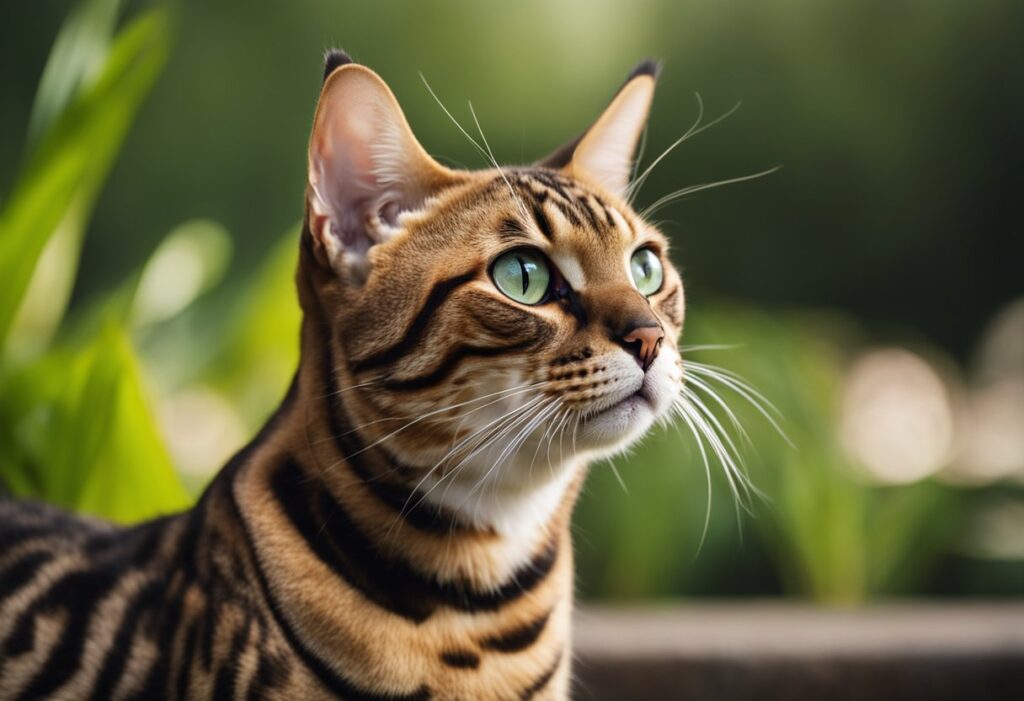
There are no specific health differences between F1 and F5 Bengals.
All Bengal cats, regardless of their generation, can be prone to certain health issues such as hypertrophic cardiomyopathy (HCM), which is a heart condition.
Have your Bengal cat regularly checked by a veterinarian to ensure they are healthy and receive any necessary treatment.
How does the F rating affect the care requirements of Bengal cats?
The F rating does not necessarily affect the care requirements of Bengal cats.
All Bengal cats, regardless of their generation, require proper care and attention to ensure they are healthy and happy. This includes regular vet check-ups, a balanced diet, and plenty of exercise and stimulation.
However, it’s important to note that F1 Bengals may require more space and stimulation due to their wild ancestry, while F5 Bengals may be more content with a smaller living space.
